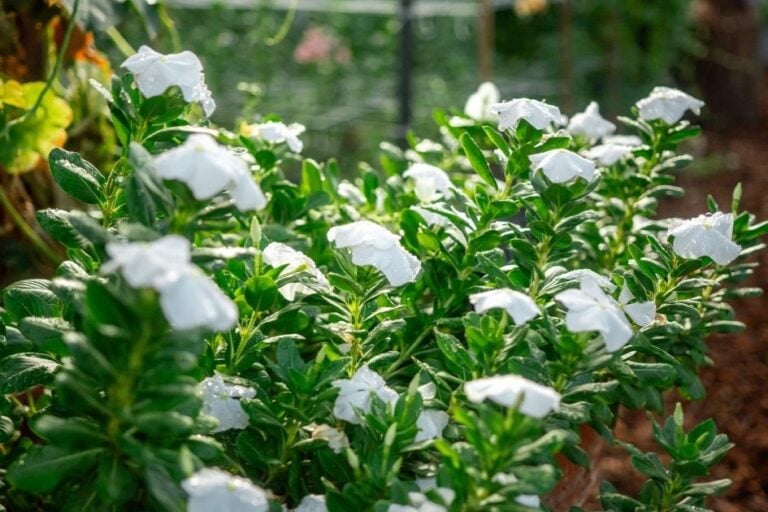Planting for Pollinators: Create an Insectary Garden Anywhere
Pollinators like bees, butterflies, hummingbirds, and beneficial insects play a crucial role in maintaining ecosystems and food production. Unfortunately, their natural habitats are declining rapidly, threatening their survival. Near me, orange groves are frequently replaced with houses, and around the Arizona Worm Farm, fields once full of pollinators are also being converted into housing developments.
The good news is your garden—no matter how big or small—can become a vital sanctuary for these essential creatures.

Creating an insectary border is a simple and effective way to start supporting pollinators, whether you’re gardening in a spacious yard or using containers in limited spaces.
Why Plant for Pollinators?
Pollinators are essential for the reproduction of most flowering plants and more than a third of our food supply. Creating spaces that support them:
- Enhances local biodiversity.
- Stabilizes pollinator populations.
- Improves the health and productivity of your garden.

What is an Insectary Border?
An insectary border is a dedicated planting area designed specifically to attract and sustain beneficial insects and pollinators. These insects naturally help manage pests, reducing your reliance on chemical pesticides.

Curious about how beneficial insects manage pests naturally? Learn more in my article, “Using Beneficial Insects as Natural Pest Control“.
How to Create Your Insectary Garden
1. Select the Right Location
Choose an area that gets at least six hours of sunlight daily and has good drainage. In hot desert climates, a spot with afternoon shade can help protect blooms and extend flowering, especially during the hottest months. Ideally, place your insectary border near your vegetable garden to get the maximum benefits from pollinators and pest control. Avoid windy areas and locations with bright nighttime lights, which can discourage pollinator activity.

If garden space is limited, containers are a practical alternative—just group several together in a sunny, protected spot you can easily observe and enjoy.

2. Choose Pollinator-Friendly Plants
Select a mix of annual and perennial plants with overlapping bloom times to ensure pollinators have continuous food sources throughout the growing season. Native plants are ideal because local pollinators are adapted to them.
Discover more about creating a pollinator-friendly garden in my post, “Perennials for Pollinators in Your Desert Garden”, where I share tips on supporting local wildlife and promoting a healthy garden ecosystem.
Planting for Pollinator Options for Arizona Gardens:
Perennials: Angelita Daisy, Baja Fairyduster, Blackfoot Daisy, Blanketflower, Chocolate Flower, Coral Vine, Creosote, Damianita Bush, Desert Lavender, Desert Marigold, Desert Milkweed, Fairy Duster, Firecracker Penstemon Mt. Lemmon Marigold, Globe Mallow, Lantana, Mealy Cup Sage, Mexican Bush Sage, Morning Glory, Parry’s Penstemon, Passion Vine, Rock Penstemon, Rock Verbena, Rosemary, Salvia, Sandpaper Verbena Shrubby Germander, Spanish Lavender, Skyflower, Tangerine Crossvine, Turpentine Bush, Woolly Butterfly Bush, Yellow Bells

Annuals: Alyssum, Aster, Anise, Bee Balm, Buckwheat, Chamomile, Clover, Coneflower, Coreopsis, Cosmos, Daisy (Regular and Shasta), Dill, Fennel, Feverfew, Goldenrod, Lovage, Mint, Oregano, Parsley, Ratabida, Rudbeckia, Sunflowers, Verbena, and Yarrow

For more details about plants that thrive in pollinator gardens, check out my post, “Plants that Attract Beneficial Insects & Pollinators”.
3. Group Plants Together in Your Insectary Border
Pollinators prefer clustered plantings, which make nectar and pollen collection easier. Plant in groups if possible rather than scattering single plants.

4. Diversify Flower Shapes and Colors
Different pollinators are attracted to different flower shapes and colors:
- Tubular flowers (penstemon, salvia) attract hummingbirds.
- Flat and open flowers (daisies, sunflowers) attract butterflies and bees.
Grouping plants strategically can improve pollinator attraction and plant health. Discover more in my post, “5 Tips for Successful Companion Planting“.

5. Provide Essential Water and Shelter
Pollinators need more than just food:
- Water: Include a shallow dish filled with water and pebbles or sticks for safe drinking spots.
- Shelter: Leave areas of bare soil for ground-nesting bees, and provide brush piles, nesting boxes, or piles of hollow stems for other beneficial insects.
Want to offer even more nesting options for beneficial insects? Follow my step-by-step guide to using insect hotels to learn how to set one up in your garden.

6. Avoid Chemicals and Go Organic
Avoid pesticides that harm pollinators. Instead, use organic practices such as:
- Allowing time for beneficial insects like ladybugs and lacewings to manage infestations rather than spraying off with water and disrupting the process.
- Hand-picking and daily monitoring to manage troublesome pests, such as squash bugs and potato beetles. Need effective alternatives to pesticides? Explore safe and sustainable solutions in “Organic Pest Control That Really Works“.

Interested in transitioning to organic gardening methods? My guide, “How to Be an Organic Gardener“, provides practical tips to help you get started.
7. Add Butterfly-Friendly Plants for Pollinators
Butterflies need specific host plants to lay eggs and feed caterpillars:

Embrace a Natural Look in Your Insectary Garden
Pollinator gardens don’t need to be perfectly manicured—let leaves and twigs accumulate as nesting material. A thriving pollinator garden is a vibrant and diverse ecosystem.

Start Small and Expand Gradually
Even creating a small insectary border or adding a few containers can make a difference. As your garden grows, consider expanding your insectary garden and increasing plant diversity.

Have you created an insectary border or pollinator-friendly garden? Share your favorite plants or tips in the comments below.










Leave a comment on Planting for Pollinators: Create an Insectary Garden Anywhere